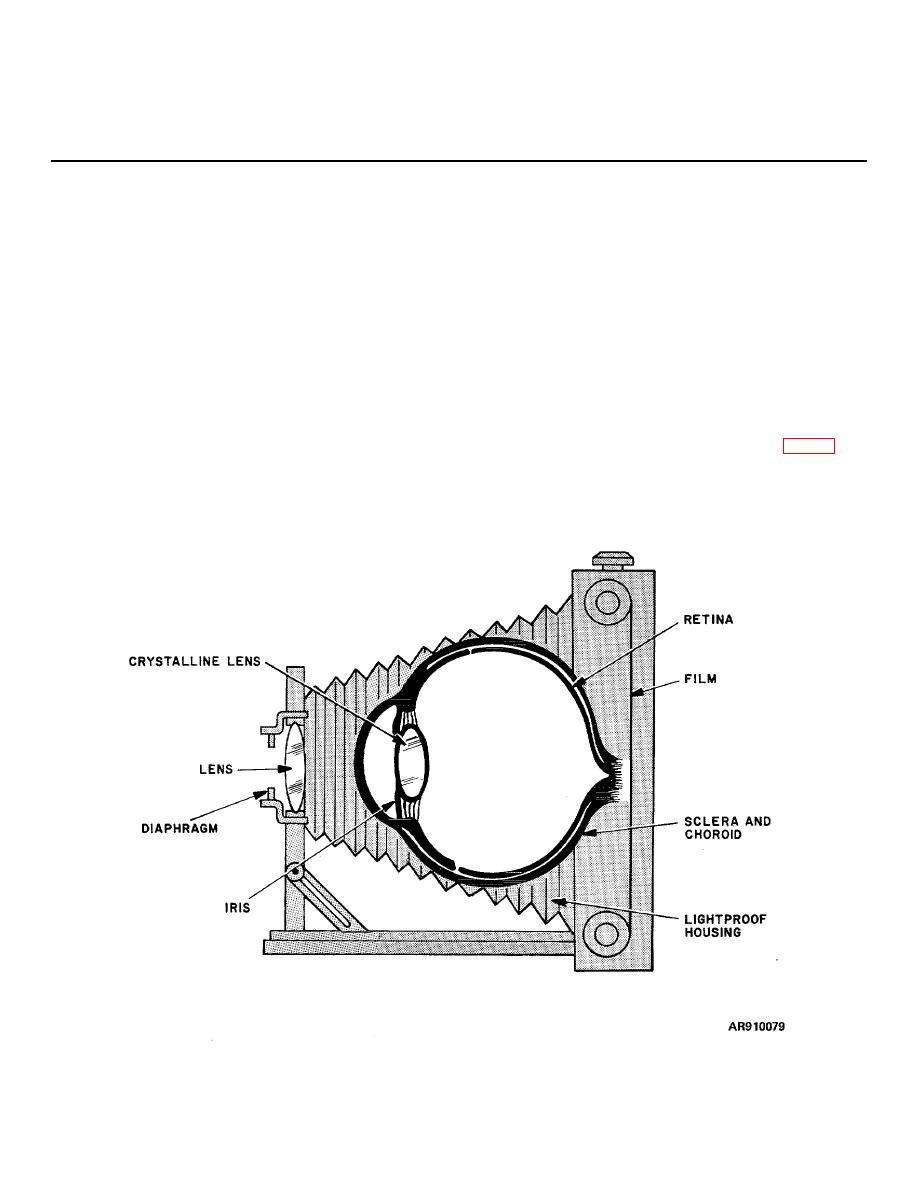 |
|||
|
|
|||
|
|
|||
| ||||||||||
|
|
 TM 9-258
CHAPTER 3
THE HUMAN EYE
Section I. GENERAL
light, and response of the whole patchwork makes a
3-1. Introduction.
All creatures endowed with sight
rough image but is coarse and inefficient in making
have eyes of some sort; some are simple and others
visible any details of the outline in pattern resolution.
complex, some adapted to long range vision and others
to short distances. Animals and birds of the mountains
3-2. Comparison of Eye and Camera. The human
and plains, where vision is unobstructed for great
distances, have visual ability which enables them to pick
eye, which is rather a sturdy organ of wonderful design,
out objects too small for human perception. This ability
may be called a living automatic camera. A high-grade
appears to be associated with small nerve, endings in
camera closely resembles the eye in basic essentials.
the retina, faster retinal response to observed motion,
Each has a compound lens to refract light rays and to
and better interpretation by the brain. The other extreme
project them to definite points by focusing. Each has a
is represented by the short range compound eye as
diaphragm to regulate the entering light, a sensitized
found in insects and crabs. This arrangement consists
surface to receive and record optical images, and a
of a patchwork of individual "eyes," each of which
lightproof chamber to shut out extrenous light and to
records a spot of shade or
protect the receiving and recording mediums (fig 3-1).
Figure 3-1. Comparison of eye and camera .
3-1
|
|
Privacy Statement - Press Release - Copyright Information. - Contact Us |